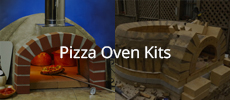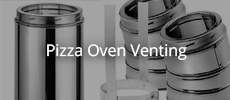Originally posted by RandyJ
View Post
Announcement
Collapse
No announcement yet.
Door Thermometer and gasket, and insulation.
Collapse
X
-
I got the lavalock gasket and it has stuck pretty well. I wire brushed the door before putting it on, and it seems to have held up well. As I said before - it has made a huge difference in overnight temps.
-
I think you'll find the hottest part of the door's inner face is right in the centre. At least that's what the charring on a wooden door with an insulation panel in front of it tells me.
I agree, an interesting discussion.
Leave a comment:
-
One of the reasons I want to replace my gasket is that it helps to retain some more steam. Also I know my Handel's are not as hot when the gasket is in place.
Randy
Leave a comment:
-
You are right that this is probably just an academic discussion, but an interesting one no less. I plan on doing a IR sweep of my door face when hot to see how uniform the temperature is. If the periphery is the hottest with a differential towards the center, the addition of an insulating layer may not be as important as getting my gasket installed. If the steel conducts the heat fast enough that the surface temps are fairly uniform across the face, the additional layer could help. When I do my temperature survey I'll post the results.Originally posted by deejayoh View Post
Isn't it the bit that is not insulated that is losing most of the heat? around the edge? In any case, I am not that concerned about it. I get 2 good cooking days and and then it's at the ~200 degree level which isn't good for much besides food drying. No matter what I do I won't get another day of >350 degree oven.
Leave a comment:
-
Isn't it the bit that is not insulated that is losing most of the heat? around the edge? In any case, I am not that concerned about it. I get 2 good cooking days and and then it's at the ~200 degree level which isn't good for much besides food drying. No matter what I do I won't get another day of >350 degree oven.Originally posted by JRPizza View PostI think the value of dropping the temp of the face sheet a few degrees could be greater than you think as it's a pretty large area and accounts for the majority of the door's heat loss ( IMO). I'll attempt to run some numbers if I can remember how ;-)Last edited by deejayoh; 01-04-2017, 10:43 PM.
Leave a comment:
-
I think the value of dropping the temp of the face sheet a few degrees could be greater than you think as it's a pretty large area and accounts for the majority of the door's heat loss ( IMO). I'll attempt to run some numbers if I can remember how ;-)Originally posted by deejayoh View PostI suspect that adding it to an existing door will add weight, but no real insulating value..
Leave a comment:
-
When roasting or baking I usually don't bother firing my oven really hot then waiting for it to cool, but prefer to fire it until the crown just begins to clear (this nearly always takes exactly one hour from light up.and the side thermometer reads around 250C). This saves both time and fuel. Because the walls and floor are not saturated with heat the temperature drops off faster, but it's plenty for a roast or a couple of loaves of bread. Mine is a cast oven with 2" walls and floor, a thicker oven may cool off much faster, so this technique may not work.
Leave a comment:
-
I would agree that the gasket helps keep the heat in better. Mine fell off and I have not replaced it yet and I don't think it has a good of a retention as before. Not a huge difference but some and the front of my door is hotter now for sure.
Randy
Leave a comment:
-
I have a thru-door thermometer, so I'll leap to it's defense.. While it is not accurate, it is consistently inaccurate - which is to say I know that true oven temp is 50 degrees +/-5 to the better of what it shows. I welded a short piece of square tubing to the back to protect the probe, and the handles project enough in the front to protect the face. My experience is that the chance of damage is nil with some careful planning.
Stainless is great except for the issue of needing a tig welder to work it.
Wood looks great, but if I have to wait for my oven to cool before I can use the door - it seems to me to defeat the purpose... I suspect that adding it to an existing door will add weight, but no real insulating value.
A door gasket is an amazing addition. My oven is 100 degrees hotter the morning after a pizza fire now than it was without. Green-egg gasket works great, is cheap, and you get more than you need.
Leave a comment:
-
I am pretty sure I lose most of my heat (door wise) from the front sheet of steel. I have not put my gasket on yet, and it should help keep heat from entering the face sheet from my reveal, and then I can get an idea of how much I am picking up from conduction, back to front. I am thinking David has it right using a door face that is less conductive than steel. I also think Larry P was on to something as I believe his door has a sort of thermal break separating the steel face from the steel rear panel and surround. To "save" the door I just built I may put a wood veneer face on which should slow my heat loss.
Leave a comment:
-
Using a conductive material like steel for a door which has its primary intention to insulate is counterproductive, particularly if the steel is thick. Stainless is less conductive so is a better solution if it is thin, but it buckles a lot when heat is applied to it so that can create sealing problems. I use a wooden door with a cast insulating panel attached, the door can be handled with one hand and the wood looks attractive. The drawback is that it can only be used at temps below 300C which is plenty for baking or roasting, otherwise the door can char if left in place for a few hours if the temp exceeds 300C.
Regarding door thermometers, I abandoned the idea long ago because it is easily damaged when fixed to the door and I found it always registered a temperature way below any other method, those being IR gun, thermocouple through the side of the oven and an air temp thermometer placed in the centre of the oven. I think the last one is probably the best, certainly the cheapest, but it does need a larger base attached to it otherwise it's really easy to tip it over and handling it when hot is a pain.Last edited by david s; 01-04-2017, 04:41 PM.
Leave a comment:
-
I've got two doors that I use for the oven. The fire door is made of stainless steel with about 1 1/2" inner chamber I filled with perlite. Check out the garden area of your local Home Depot or Lowes, they will have smaller bags of both perlite and vermiculite to use to insulate the inner chamber of your door. My fire door weighs about 27 pounds and is not practical to use when I'm baking so I got a lighter door built. I can lift and move it single handed. It's got an old welder's tool coil on the handle, so even though it gets warm I seldom have to use a hot pad to move it off to the side. I've attached a couple of pics below that show both the fire door and the working door.
As JR noted above (post #4), I just use my IR gun to check temps the next day. Opening the oven briefly and taking a scan with the Forno Bravo IR gun allows you to see the high, low, and average floor temp of the scan path. The problem with the door thermometer (IMHO) is that you want to know the cooking floor temp primarily because if your oven has equalized that's pretty much your cooking temp...the door thermometer is reading the coolest part of the oven after the fire/coals have been removed. I certainly wouldn't bother putting a thermometer through a door...I'd rather put in a section of fireplace glass 4 Photos
4 Photos
Leave a comment:
-
I used 1/4" steel plate on the inside of my door and filled it with rockwool insulation the green stuff you can't light on fire from the home depot... the front is 3/16" if I remember right? The door is HEAVY...Probably 30 lbs... and It heats right through... I have 2 1/2" wooden dowels as handles and good thing because that door gets HOT I don't really think the insulation helps at all... The metal all along the edges and door brace supports transfers the heat right through i'm sure... But it'll maintain 400 degrees for hours and hours! ....
....
Leave a comment:
-
I agonized (well, really went back and forth in my mind) over using a thermometer. Ideally you want the recommended amount of protrusion on the back side (need to look at the specs) and with the 4" thickness I had already started to build I could not find a suitable unit. I also didn't want any of the ceramic blanket coming out of the holes if I removed the thermometer, so I was trying to figure out what kind of tube to put thru the door. In the end I decided to not go that way. I tend to cook the day after initial firing/cooking regardless of the temp and just use my IR thermometer to see if I am still hot enough.Originally posted by danjmath View PostAny input on the thermometer? Thats the only thing I need to order, so I either need to get it from Amazon prime, or order it today (or use my old meat one).
Even with my thin steel and 4" of insulation my door face gets warm enough that I know I'm losing heat. The next door I build will have either an insulated face sheet or a thermal break between front and back.
Leave a comment:
-
Thanks, I'll see if I can scrounge up some 1/8 inch or thinner steel for cheap.
Any input on the thermometer? Thats the only thing I need to order, so I either need to get it from Amazon prime, or order it today (or use my old meat one).
Leave a comment:





Leave a comment: